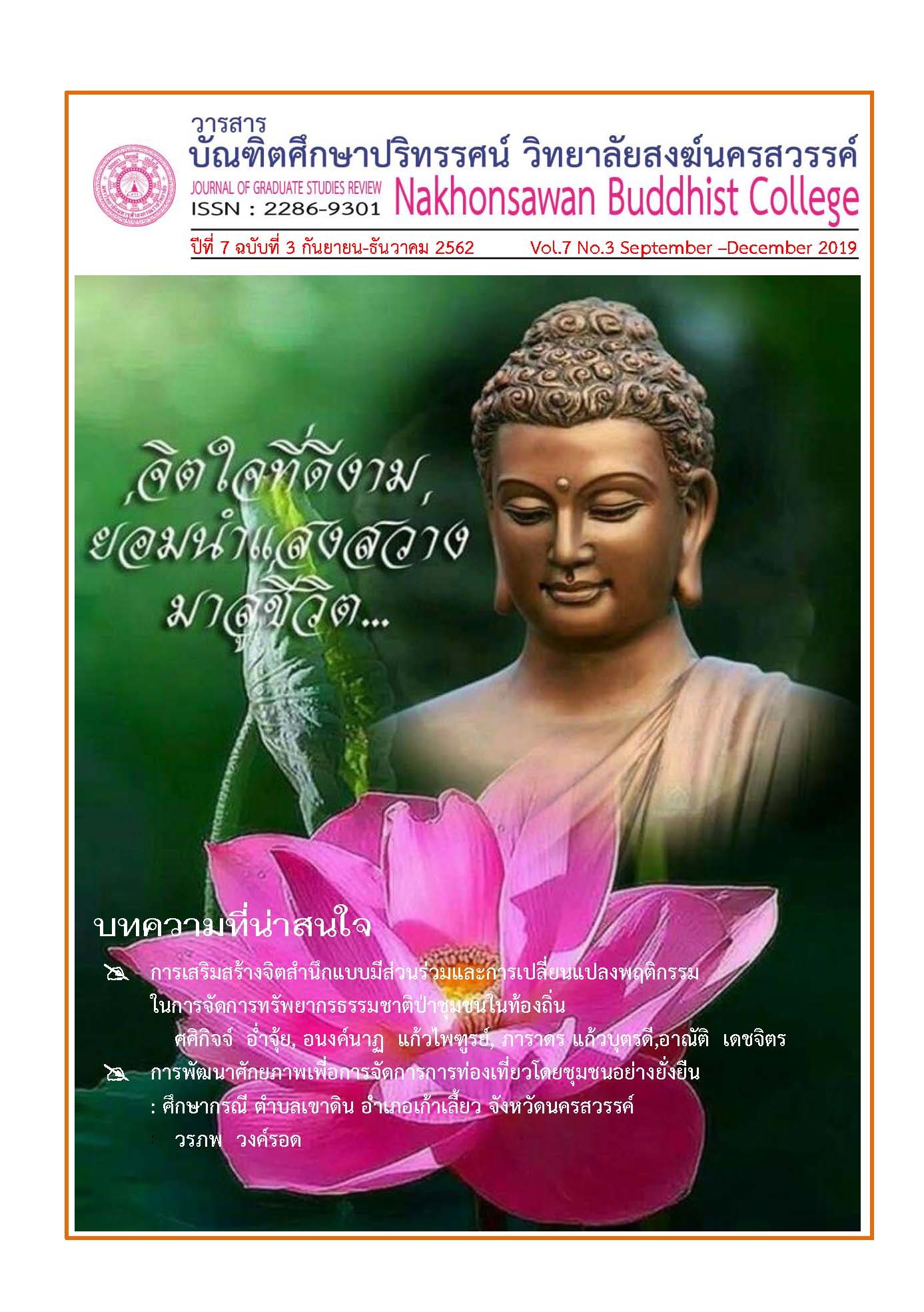Applying Participatory Design Approach for Developing Virtual Reality of tourism media Promotion: Champasri city , Mahasarakham province
Main Article Content
Abstract
This research was designed to : 1) study about the needs of augmented reality media forms 2) outline and make the augmented reality media 3) assess the perception of the sample group regarding the augmented reality media and 4) evaluate the satisfaction of the sample group towards the augmented reality media by employing the participatory design for tourist promotion of Cham Pa Sri, the ancient town, Maha Sarakham, considered as research and development. Regarding the research procedure, the researcher based the participatory design process of educational video production on research conduction which was divided into 7 steps as following: 1) Problem Determination - in this step, the researcher holding the people forum together with 30 stakeholders in Ku Santarat Community including the community leader, local wisdom elites and local people selected by purposive sampling, 2) Target Group’s Characteristic Analysis – studying the research studies regarding media quality tourists are interested in, 3) Target group’s Need Assessment - conducting the need assessment by interviewing 10 tourists selected by accidental sampling, 4) Participatory Design – providing a focus group with 10 stakeholders in the community selected by purposive sampling, 5) Production – determining the production process into 3 steps: Pre-Production, Production and Post-Production, 6 ) Evaluation – having the participatory-designed augmented reality media for tourist promotion of Cham Pa Sri, the Ancient Town that has been developed evaluated by 9 experts, namely, 3 experts on context, 3 experts on video media and 3 experts on augmented reality media, and then bringing the recommendations from the experts to adjust the media so as to get the completed media and 7 ) Distribution – testing the participatory-designed augmented reality media for tourist promotion of Cham Pa Sri, the Ancient Town with the sample group including 50 tourists selected by purposive sampling. Tools used for research conduction comprised of 1) the people forum minutes, 2) the tourist interviewing form, 3) the focus group resulting form, 4) the participatory-designed augmented reality media for tourist promotion of Cham Pa Sri, the Ancient Town, 5) the media quality assessment form by the experts, 6) the perception evaluation form on Cham Pa sri, the Ancient Town and 7) the tourist satisfaction evaluation form completed after using the participatory-designed augmented reality media for tourist promotion of Cham Pa Sri, the Ancient Town.
The research results appeared as following: 1. the studying result concerning the needs of the participatory-designed augmented reality media for tourist promotion of Cham Pa Sri, the Ancient Town revealed that the sample group needed the media that can be watched through a smart phone while travelling; 2. the participatory outlining result of the augmented reality media’s prototype employing participatory design for tourist promotion of Cham Pa Sri, the Ancient Town revealed that the prototype outline should be composed of 1) contexts, namely, 1.1 the history of the Ancient Town Cham Pa Sri, 1.2 the history of Ku Santarat, 1.3 the history of Ku Noi, 1.4 the history of the Pavilion Nang Khao, 1.5 the history of the holy pond and 1.6 the history of the Buddhist site where the Buddha’s relics were found, 2) media – 2.1 messages, 2.2 graphics and 2.3 videos and 3) augmented reality media: 3.1 software programs including 3.1.1 AR Marker and 3.1.2 AR Engine and 3.2 hardware – smart phones; 3. the result of media quality assessment by the experts revealed that the quality of the augmented reality media for tourist promotion of the Ancient Town Cham Pa Sri was totally in the highest level ( = 4.75, S.D. = 0.21); 4. the result of perception evaluation, the sample group met the highest level of the developed media perception ( = 4.72, S.D. = 0.44) and 5. The result of the sample group’s satisfaction evaluation was in the highest level in the overall picture ( = 4.76, S.D. = 0.04).

